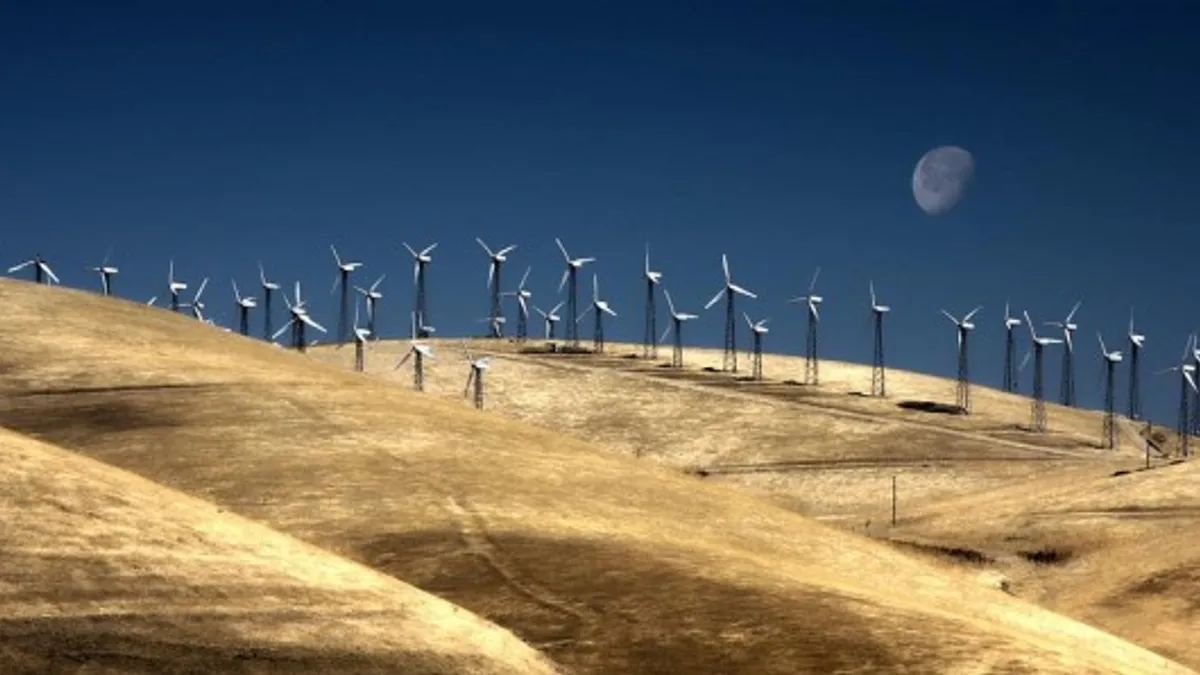Dive Brief:
-
The number of contracts signed for wind power projects hit a record of 3,500 MW in Q1 2018, according to the American Wind Energy Association, signaling that 2018 should be a strong year for the renewable resource.
-
There are now 33,449 MW of wind projects under construction or in advanced development in the U.S., a 40% increase from last year and the highest level since AWEA began compiling the metric at the beginning of 2016.
- Despite fears that changes in the tax code would slow wind power development, the tax equity market, the key financing vehicle for wind projects, appears to have adapted and survived intact.
Dive Insight:
The number of wind power purchase agreements (PPA) signed last quarter was the highest volume of PPA announcements in any quarter since AWEA began tracking them in 2013.
AWEA noted that six companies, including Adobe, AT&T and Nestle, signed wind PPAs for the first time while several other corporations were repeat customers. Utilities also stepped up to the plate, with PacifiCorp announcing plans for a $2 billion wind farm in Wyoming.
In March, DTE Energy submitted a proposal to regulators for 1,000 MW of wind farms that would be completed by 2022.
The two main factors contributing to the increase in projects are the greater certainty around tax policy and the fact that developers are eager to meet the deadlines imposed by the Congressionally mandated phase out of the production tax credit (PTC), Keith Martin, a partner at Norton Rose Fulbright, told Utility Dive.
The PTC, which provides an incentive payout for the first 10 years of a wind farm’s life, has been a driving force in the growth of wind power, as has the financial structures that have allowed financial institutions to monetize the value of tax credits. Those structures have expanded the market beyond the relatively few entities that are in a position to make use of the tax credits.
In the run up to the passage of the Republican tax bill last year, there were concerns in the wind power industry that a last minute provision in the tax bill, the Base Erosion Anti-Abuse Tax (BEAT), could have a “devastating” effect on renewable energy projects.
The BEAT provision was designed to make it harder for corporations to dodge taxes, but it would also sweep up tax credits — such as the PTC for wind power and the Investment Tax Credit (ITC) for solar projects — making the credits more difficult to monetize.
But the BEAT concern has gone away for two reasons, Martin said. The industry worked hard to mitigate the provision as it was enacted and succeeded; it doesn’t really have its full effect until after 2025, he said. Second, the biggest players in the tax equity market realized that they are not really affected by the provision.
“They have the planning tools,” Martin said. The BEAT provision aims to close a loophole for certain kinds of cross-border transactions, but by changing the name of a payment, you can make it go away. The top three players in the tax equity market account for 40% of the market and they are not affected, he said.
With the BEAT issues behind them, bankers and developers have returned their focus on beating the clock for the phase-out of the PTC.
Even though the value of the PTC is cut by 20% for 2018 projects, under Internal Revenue Service rules, projects that had already begun work on equipment or at a project site in 2016 are still eligible to collect 100% of the PTC.
That prompted a lot of developers to buy and stockpile wind turbines. Based on stockpiled equipment from 2016 there are about 40,000 MW of wind projects in the wings with another 10,000 MW of equipment stockpiled in 2017.
As the clock continues to count down on the PTC, which ends after 2019, “there will be a rush in 2020 to get everything finished,” Martin said.













